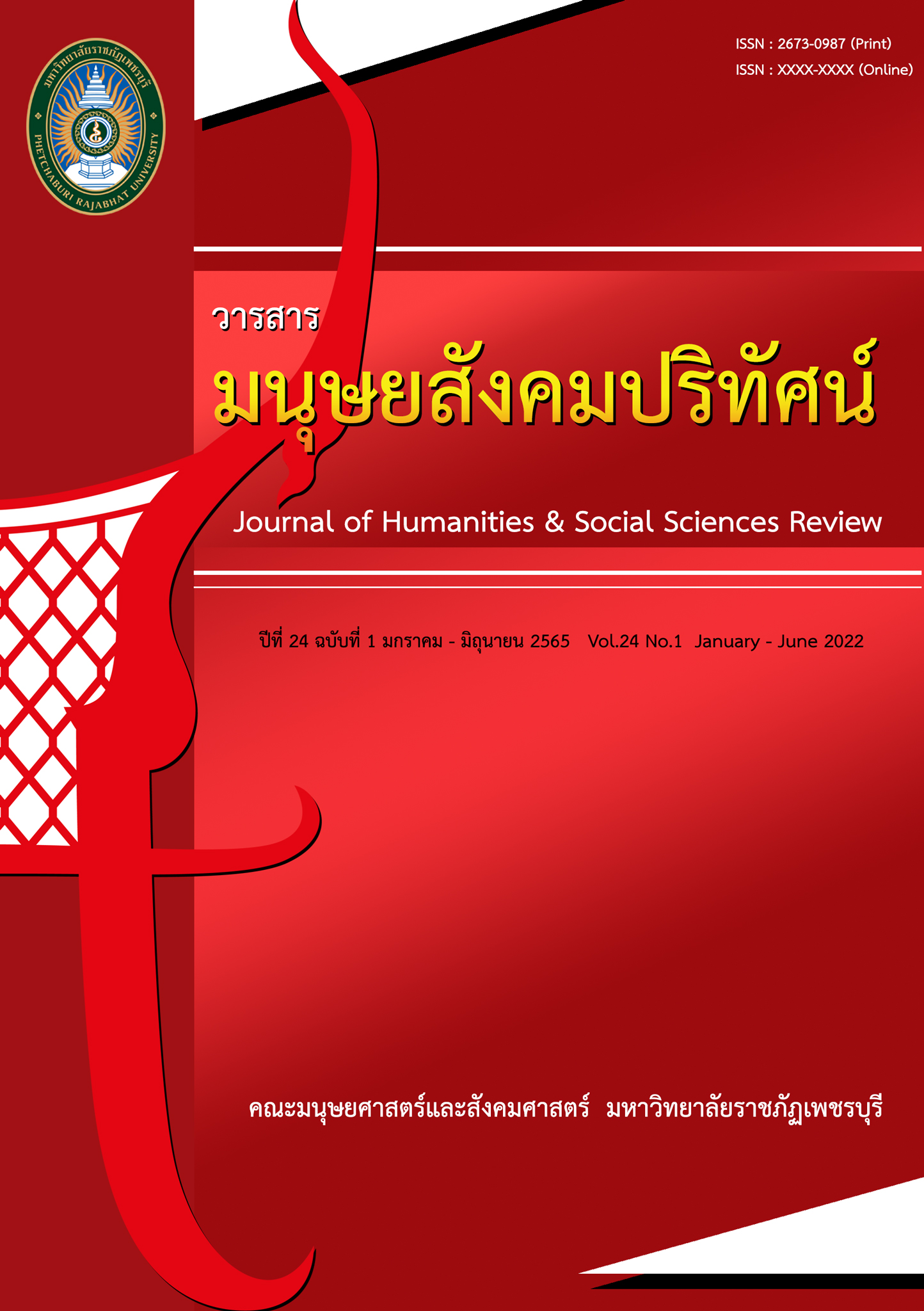Blending of Mandarin Chinese “N+N” Compounds
Main Article Content
Abstract
This research examined the blending of Mandarin Chinese “N-N” compounds, following the approach of cognitive linguistics according to which the semantic blending of nouns is one of the language use phenomena which reflects the conceptual of the language users. The understanding of compound blending enables the students who study Chinese as a foreign language to grasp the conception of Chinese people, the meaning and the derivation of the meaning of compounds. The research was conducted in the following technique: 50 “N-N” compounds were randomly selected from Chinese-Thai dictionaries, whose characteristic of blending and grouping the type of blending is then analyzed according to the blending theory of Fauconnier & Turner (2002) and Benczes (2006).
The research showed that the meaning of “N-N” compounds in Chinese is the result of single-scope networks and double-scope networks blending, which use three kinds of conceptual mapping: metaphor, metonymy, and metaphor together with metonymy. The mappings may occur in the former N which is the modifier or the latter N which is the head of the compounds. However, the result covered only parts of the N-N compound blending, there might be other types of blending in Chinese N-N compounds. The paper seeks to contribute to future studies on other types of compound blending.
Article Details
1. Any views and comments in the article are the authors’ views. The editorial board has not to agree with those views and it is not considered as the editorial board’s responsibility. In case, there is any lawsuit about copyright infringement, it is considered as the authors’ sole responsibility.
2. The article copyright belonging to Faculty of Humanities and Social Sciences, Phetchaburi Rajabhat University are copyrighted legally. Republication must be received direct permission from the authors and Phetchaburi Rajabhat University in written form.
References
เธียรชัย เอี่ยมวรเมธ. (2554). พจนานุกรมจีน-ไทย ฉบับใหม่. กรุงเทพฯ: รวมสาส์น.
นววรรณ พันธุเมธา. (2558). ไวยากรณ์ไทย. กรุงเทพฯ: โครงการเผยแพร่ผลงานวิชาการ คณะอักษรศาสตร์ จุฬาลงกรณ์มหาวิทยาลัย.
เสาวภาคย์ วรลัคนากุล. (2553). หลักภาษาจีนสมัยปัจจุบัน. กรุงเทพฯ: สำนักพิมพ์มหาวิทยาลัยรามคำแหง.
白解红与陈敏哲. (2010). 汉语网络词语的在线意义建构研究—以“X客”为例。外语学刊, 2(153): 25-30.
陈俊光. (2010). 篇章分析与教学应用.台北:新学林.
钱乃荣. (2002). 现代汉语概论.台北:师大书苑.
王姣姣. (2014). N+N复合名词的意义建构探究—关联理论视角. 硕士学位论文,青岛:中国海洋大学.
武楠楠. (2018). 《现代汉语词典》第7版新增VN式词语概念整合研究. 文学硕士论
文,河北大学.
朱德熙. (2010). 语法分析讲稿. 袁毓林整理注释. 2014. 3重印) 北京:商务印书馆.
Benczes, R. (2006). Creative Compounding in English. Amsterdam: John Benjamins Publisher.
Fauconnier, G., & Turner, M. (2002). The way we think conceptual blending and the mind’s hidden complexities. New York: Basic Books.
Li, C. N., & Thompson, S. (2003). Mandarin Chinese a functional reference grammar. Taipei: The Crane Publishing.
Opper, Michael and Alexander Sugar. (June 22, 2013). Truncation and headedness in Chinese compounding: a dictionary-based study. North American Conference on Chinese Linguistics – 25. Ann Arbor, MI. Paper to appear in conference proceedings. *Digital version available online, cited by other researchers.*
Shi, X. (2011). The impact of face on Chinese students' simulated negotiation practices with Americans. Language and Intercultural Communication, 11(1): 26-40.
汉典(未标明日期). 搜索于2019-4, www.zdic.net.
Molly. (2564). รังนกที่สวยงามด้วยกิ่งไม้แห้งและภาพตัดปะ รูป PNG และภาพ. สืบค้นเมื่อ 2 กันยายน 2564, จาก https://th.pngtree.com/freepng/beautiful-birds-nest-with-dry-branches-and-leaves-clipart_5861823.html
Pixelchaos. (2564). "กระโหลกมนุษย์วิวด้านหน้า". สืบค้นเมื่อ 2 กันยายน 2564, จาก https://th.depositphotos.com/25636929/stock-photo-human-skull-front-view.html
来源: 君山梵静. (2564). 随处可见的门鼻—铺首,谈谈中国传统镇宅、辟邪文化思想?.สืบค้นเมื่อ 2 กันยายน 2564, จาก https://www.163.com/dy/article/G1R1P2DT0543L395.html
PRIMA'S. (2564). เทคนิคการเลือกทรงผมของผู้ชายให้เข้ากับรูปหน้า. สืบค้นเมื่อ 2 กันยายน 2564, จาก https://www.hairsmithclinic.com/2021/07/13/hair-styling-for-men/


